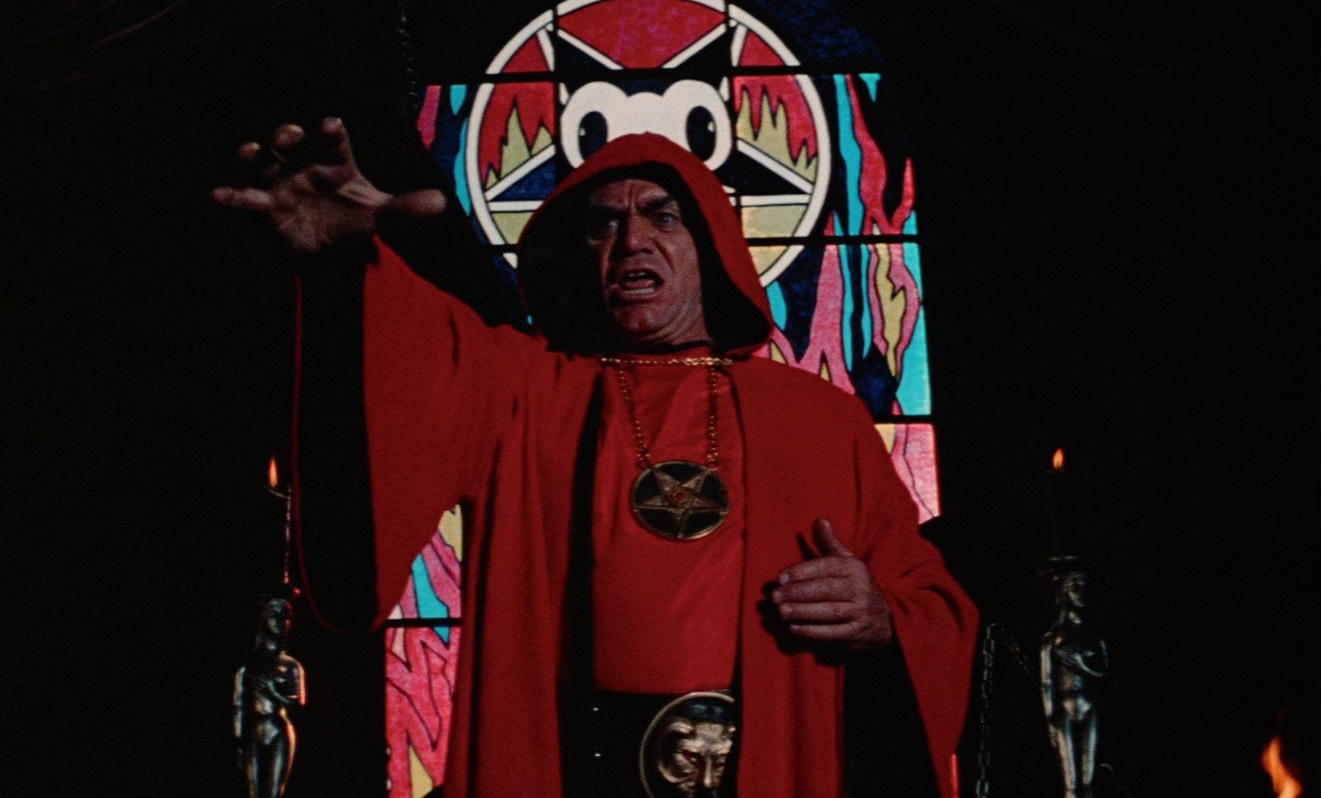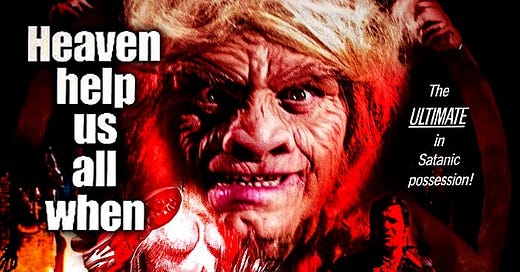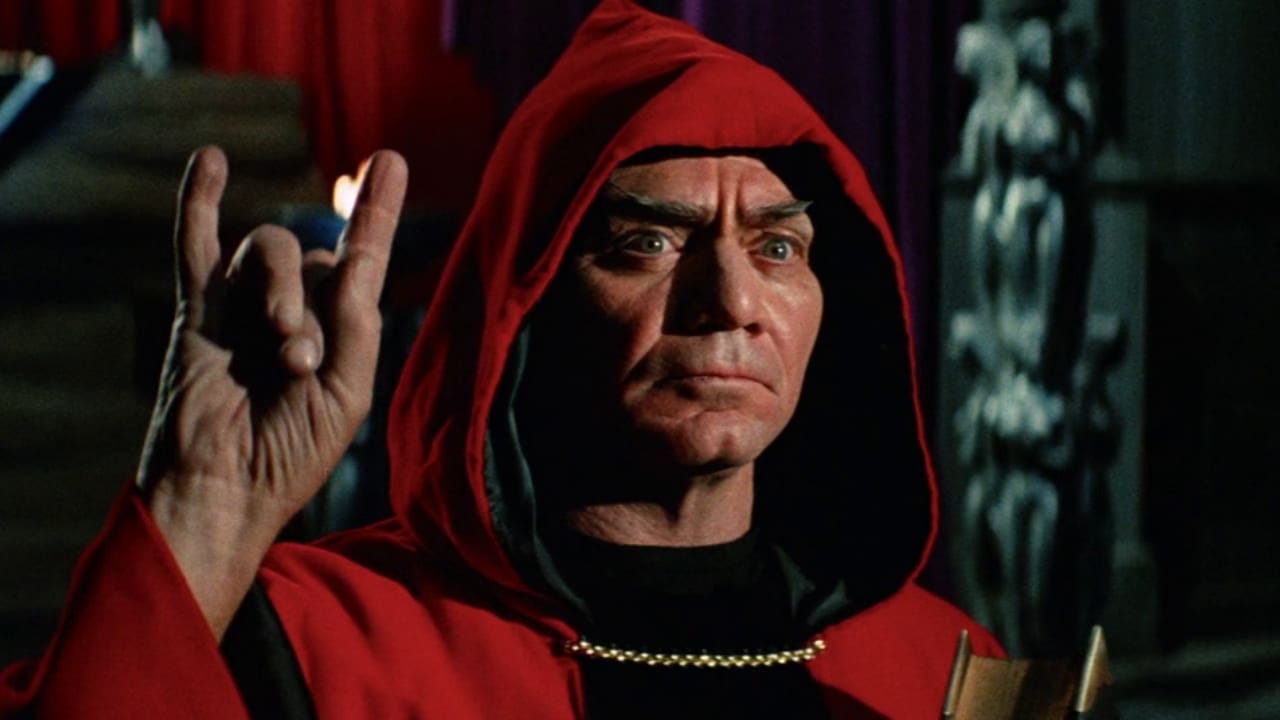Well, the holidays are over, which comes as a personal relief, but now we’re faced with tax season. This occasion will no doubt find some of you firing up Turbo Tax, or toddling off to H. & R. Block, but I gotta be me, so I will once again be suckling at the inexhaustible teat of wisdom that is Hollywood.
The best tax movie is The Adventures of Robin Hood (1938), with Errol Flynn, Olivia de Havilland, and Basil Rathbone, because it’s not only a classic film and an effective polemic against high marginal rates, but also presents practical methods for evading taxes with arrows.
The second best tax movie is Everything Everywhere All at Once (2022) with Michelle Yeohn, Ke Huy Quan, and Stephanie Hsu, although it cheats a bit by adding laundry, which of course everybody loves and which totally takes the sting out of the taxes.
But we’re not here to delicately cherrypick smart ideas from good movies. No, we’ve met to plumb the mucky depths of crap cinema like cops dragging a pond for a drowning victim, so join us as we turn to the ultimate on-screen depiction of Death and Taxes:
The Devil’s Rain (1975)
Directed by Robert Fuest
Written by James Ashton, Gabe Essoe, and Gerald Hopman
It is a dark and stormy night. Ida Lupino is worried about her husband—and she has cause, because when he shows up, he’s missing his eyes. Mr. Ida tells son William Shatner to take “The Book” to Ernest Borgnine, then melts into a pile of goop—a thing which apparently happens all the time, since neither Ida nor Shatner are much impressed by it.
Next morning, Shatner rides out into the California desert until he reaches Satan’s Subdivision (which, though it reeks of unholy corruption, is convenient to schools and shopping). He and Borgnine exchange fraught dialogue until it’s apparent they are equally matched in the overacting department, so they agree to a Faith showdown. As they enter the New England-style white clapboard chapel where the duel is to take place, we notice that the whole congregation is wearing black robes ornamented with Hello Kitty insignias—and they don’t have any eyes! Apparently, Borgnine’s entire following consists of a Braille Academy graduating class that he recruited in mid-commencement.
Borgnine and Shatner each offer prayers to the deities of their choice, and then Shatner shoots a bunch of parishioners. This is not only improper behavior in a house of worship, but the judges rule that it constitutes illegal use of a foreign object, so Ernest gets his soul.

Meanwhile, over in Hooterville, Shatner’s brother Tom Skerritt and Tom’s vacant wife Julie are playing the Kreskin Home Game with Eddie Albert. Just then, Tom receives word that his family is missing and presumed damned. Tom and Julie head over to the Satanic Suburbs, where up-and-coming cult member John Travolta (who is listed in the credits as “Danny, the Littlest Satanist”) roughs them up. Julie then has a flashback to their previous lives in Colonial Salem. It seems they sold their souls to Satan (through his licensed representative, Ernest Borgnine) in exchange for acting careers. However, the good times ended when Shatner’s wife stole Borgnine’s book of names and ratted everybody out to the HUAC, which burned them at the stake.
The Satanists are impressed by Julie’s uncanny ability to provide exposition, and they kidnap her. A shaken Tom seeks help from Eddie Albert (Arnold Ziffle was busy). Eddie deduces that “The Book”, which has been in Tom’s family ever since the flashback, contains the signatures of those who sold their souls back in Salem. Eddie further explains that Satan won’t accept delivery of the souls without proof of purchase, which explains why Ernest wants The Book so badly—it’s the end of the quarter and he needs to get his expenses in.
Tom and Eddie explore the quaint Satanist chapel, discovering a manhole that leads directly to Hell. While browsing around the underworld, they pick up a lovely souvenir at The Ungodly Giftshop: Satan’s Sno-Globe, a vessel containing the souls of Borgnine’s followers. These unfortunates are continually subject to the Devil’s Rain—which must be even ickier than golden showers, to hear the people in the paperweight piss and moan about it.
But while they were sno-globe shopping, Borgnine grabbed The Book, causing Ernest to hideously transform into the physical embodiment of Satan—which means that he puts on a white fright wig, a sheep’s nose, and ram horns. Or maybe he suddenly became a spokesmodel for Dodge Trucks—the movie’s a little vague on this point.
Tom puts on a Hello Kitty Satanic cap and gown and infiltrates the coven, but he blows his cover by objecting mildly to Borgnine’s plan to sacrifice Julie (allowing John Travolta to deliver his only line in the movie, “Blasphemer! Blasphemer!”). Score so far: Evil 5, Good 0.
Suddenly, the filmmakers spring their horrible surprise: William Shatner is still in the movie! And now he has the sno-globe. Fortunately, he succumbs to Eddie’s plea to break the cursed knick-knack, assured that this will free his soul (and everybody else’s) from the devil’s power. Unfortunately, this doesn’t end the movie, it just causes it to rain—and, as it turns out, devil worshippers are highly water-soluble. So, everybody starts to get gooey and then to melt. For nearly ten minutes. What a world, what a world. While the copy on the DVD promises “Absolutely the most incredible ending of any motion picture!” this sequence actually contains all the thrills of watching a carton of Neapolitan ice cream you’ve left out in the sun. But if you’re lactose intolerant, you might feel vindicated by it.
Eventually the landscape is littered with sticky piles of pastel goo that used to be Borgnine and company, and Julie and Tom are free to go on with their lives, released from the curse that has hung over their family for centuries! At last, Good (represented by the star of Green Acres) has triumphed over Evil (embodied by the co-star of Airwolf), just as it was foretold in the Book of Revelations. The End.
So, what did we learn from this movie? Mainly that the disposition of one’s immortal soul depends not upon good works, or mortal sin, but on whether Satan’s middle managers turn in their paperwork on time.
We also learned the importance of keeping good records. IRS Publication 552, “Record Keeping for Individuals” makes the same point, albeit without William Shatner or John Travolta, so it’s more entertaining. This pamphlet, written for Americans of all ages, asks thought-provoking questions, like “Why Keep Records?” and then provides faith-affirming, weirdly ungrammatical answers (“In addition to tax purposes, you may need to keep records for getting a loan”).
IRS Publication 552 also deals with specific situations that may come up in the life of you, the taxpayer. For instance, if you are in the second-hand soul business, and somebody happens to steal your inventory, here is vital information about what records you need in order to file a tax write-off on those souls:
Casualty and Theft Losses of Souls
Before filing a deduction, you must complete form 666-EZ, indicating the amount you paid for each soul. (For intangible payments like “fame” and “power,” provide a fair market estimate by checking comparables on eBay; the fair market value of “love” will be determined by whatever the women are willing to sell themselves for on the current version of The Bachelor.)
To support your claim for a casualty loss, your records should show the type of mishap that destroyed the soul or souls (e.g., “water damage.”)
Hint: keep a journal, making note of all the information you will need to file your IRS claim. For example, “Dear Diary, On June 2, 1975, I asked the satanic intern, John Travolta, to check on the souls that I keep in a sno-globe stored in a pit of hell. He said he couldn’t find the sno-globe, as it had been stolen. Probably by blasphemers. Those souls were my property that I purchased in a flashback. Before I could get them back, they all melted, so they were a complete loss. (Well, the William Shatner soul had already been depreciated to worthlessness by those Priceline commercials, but the rest were pretty valuable.) I must remember to claim a loss on this year’s income tax return, which I fully intend to file in January. Because, as we all know, it’s intending to pay taxes that pave hell’s roads.”
And what else did this movie teach us? Not much, but it did raise a question: why are modern conservatives constantly freaking out about the devil’s influence on society, leading them to ban PornHub across the South, post the Ten Commandments in every public school, and pass off bibles as textbooks like they’re locked in an existential struggle to stop the spread of International Communism or something. But according to this movie, the Church of Satan is just a couple of weird guys and some eyeless people who meet Wednesday nights in the old Presbyterian chapel, and it’s a Dave & Buster’s now anyway, so I question their emphasis.







Fun fact about this movie: John Travolta was converted to Scientology by one of the other cast members during filming. Wiki Sez: "While on the set of The Devil's Rain, [Julie] Prather told an "extremely unhappy" John Travolta that Scientology had helped her, inspiring him to get involved with the religion upon his later return to Los Angeles...In his 2010 book Showgirls, Teen Wolves, and Astro Zombies, Australian film reviewer Michael Adams called The Devil's Rain "the ultimate cult movie ... It's about a cult, has a cult following, was devised with input from a cult leader [Anton LaVey founder of the Church of Satan, who also had a small role in the movie], and saw a future superstar indoctrinated into a cult he'd help popularize." The last reference is to John Travolta, who made his film debut in Devil's Rain, and Scientology, to which Travolta was introduced by a crew member during filming."
I hsd no idea that it would be so easy for Good to triumph over Evil.
Can we try it now against MAGA?